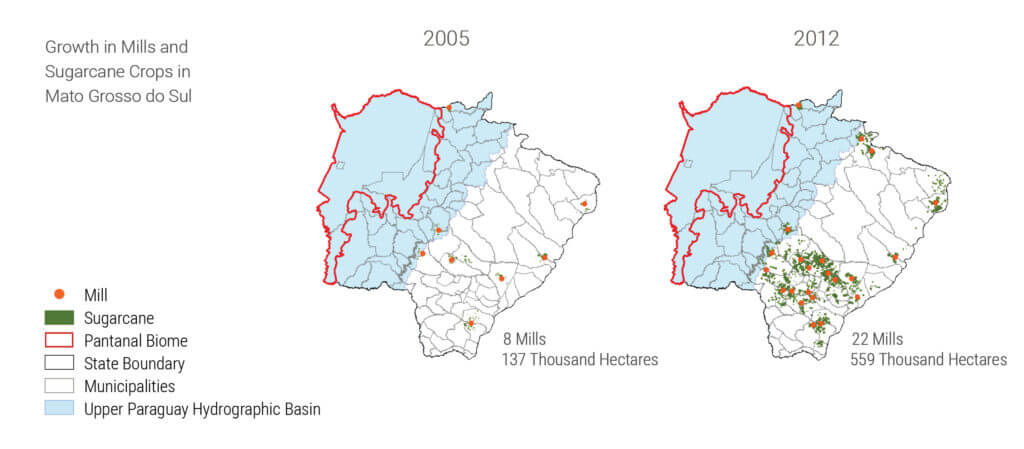As the world seeks to slow carbon emissions by shifting toward renewable energy and more efficient land use, remarkable opportunities arise for Brazil. Following the introduction of flexible fuel vehicles and the accompanying jump in ethanol demand, the nation’s sugarcane industry surged over the past decade. Between 2005 and 2012 sugarcane area increased 70% nationwide and production quadrupled in the Germany-sized State of Mato Grosso do Sul, a booming frontier for sugarcane. Forecasters project this expansion will continue over the next ten years, rising by an additional 37% in the country.

Today, Brazil is the world’s leading sugarcane producer, its top sugar producer and exporter, and the second leading ethanol producer and exporter. Despite the large investment and expansion in these products, little evidence has been collected about how the sugarcane mills affect the rural communities where they move in. Yet, in order for policymakers and stakeholders to set effective economic, environmental, and energy policies, a richer understanding of the economic impact of the mills is crucial.
This brief is based on a new study by INPUT researchers at Climate Policy Initiative/ PUC-Rio and provides insights about the widespread reach and impacts of the sugarcane mills’ expansion.
The analysts examined the mills’ impact on land use, economic growth, demography, labor markets, and financial services in municipalities in Mato Grosso do Sul.
HIGHLIGHTS
- A richer understanding of the economic impact of the mills is crucial for policymakers and stakeholders when setting economic, environmental, and energy policies.
- A typical municipality in the study saw a GDP increase of 30% within three years.
- The mills’ arrival induced a land use shift, mainly from pastures to sugarcane.
- Many positive impacts were documented in agricultural production, deforestation, the labor market, and the flow of financial resources.

